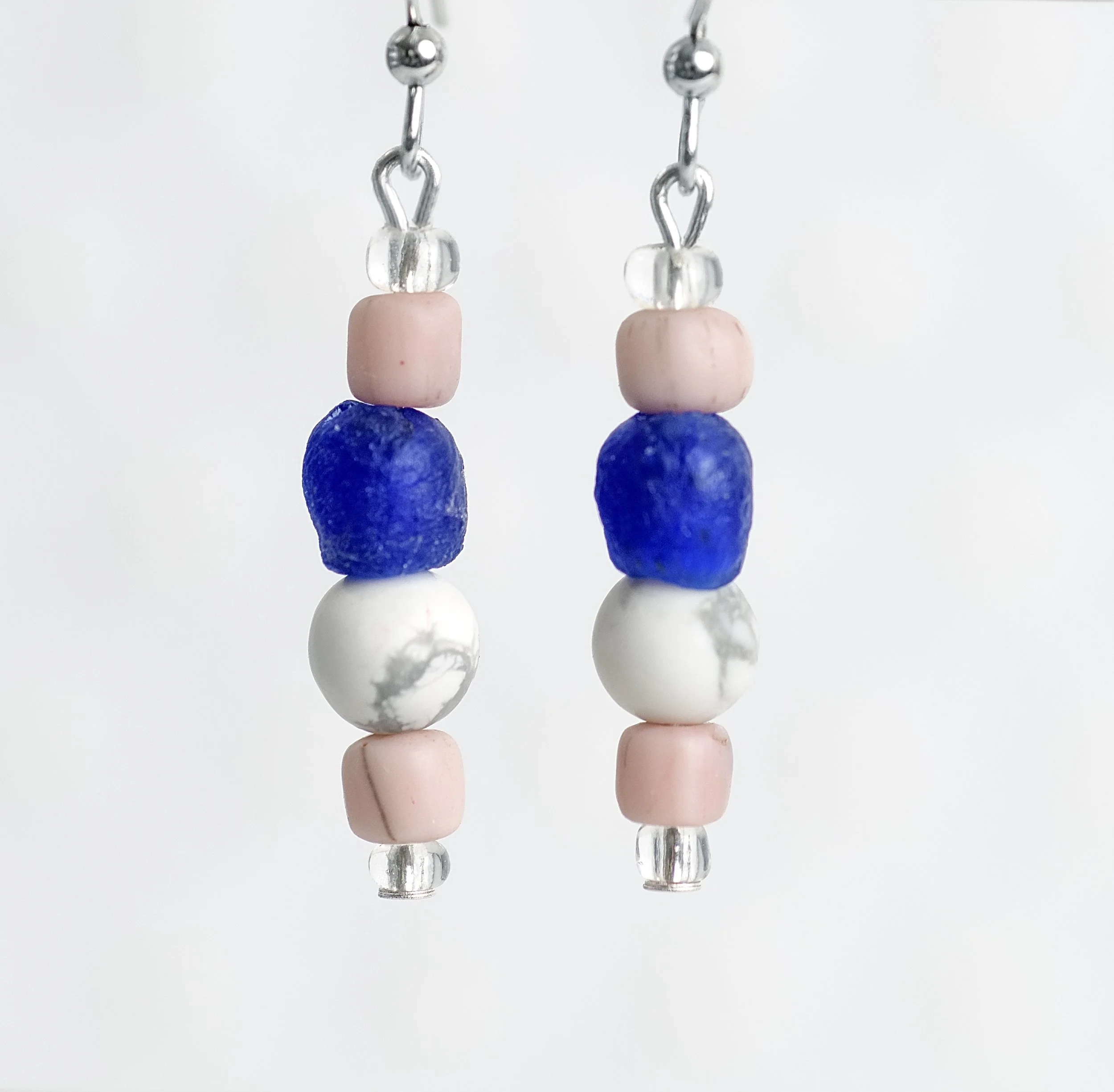MORE INFORMATION
Howlite is a borate mineral known for its chalky white appearance with dark veins, symbolizing patience and perspective. Sometimes it is referred to as Buffalo Turquoise or White Turquoise. It was “discovered” near Windsor, Nova Scotia, in 1868 by Henry How (1828–1879), a Canadian chemist, geologist, and mineralogist. It can be found in Canada, USA, and California, with smaller deposits in Germany, Mexico, Russia, and Turkey.
The matte opaque soft pink glass beads are newly made in Java, Indonesia in the style of ancient Indo-Pacifc Tradewind beads.
The cobalt blue glass beads are made from recycled glass and are produced by the indigenous peoples of Ghana, West Africa. The recycled sources of these beads include old beverage bottles, medicine bottles, and the like, using a centuries old method.
The earliest such beads were discovered during archaeological excavations at Mapungubwe in South Africa, and dated to between 970-1000 CE. Today’s manufacturing of these glass beads are now concentrated in West Africa, particularly in the Ghana area, by Ashanti and Krobo craftsmen and women. Beads still play important roles in Krobo society.



